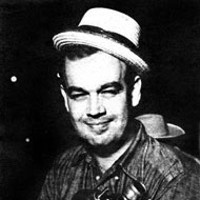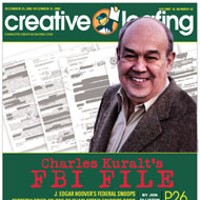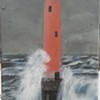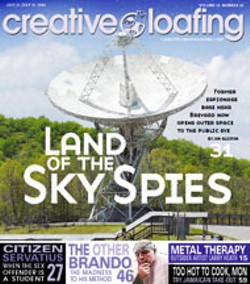Land of the Sky Spies
Former espionage base near Brevard now opens outer space to the public eye
By Jon EllistonPage 2 of 4
US Rep. Lamar Gudger sounded the alarm over his district's impending loss of jobs and lobbied for the government to find a new use for the station. Gudger suggested such functions as astronomy and forestry studies, but he found no takers, either public or private.
Rosman station was in desperate need of a new tenant. But who, besides NASA, could use a remote, high-tech communications base?
NSA: Big Brother in the backwoods
Just as it had outlived one government mission, the facility unexpectedly found another. Only this time, officials wouldn't be boasting about it or maintaining an open-door policy. Rosman station was about to go Top Secret.
The Defense Department acquired the property in 1981, but the Pentagon brass had nothing to say about their plans for the facility, and in fact, the military ownership was just a cover. The real new occupant was the super-secret National Security Agency.
One of the best-funded but least-known intelligence agencies, the NSA conducts the government's most advanced espionage, making and breaking codes and intercepting communications. The agency tracks, records and analyzes everything from phone calls to e-mails to faxes to satellite transmissions. In recent years, it has become controversial both at home and abroad due to concerns about privacy in personal communications.
Back then, the agency's target was the country's main Cold War adversary, the USSR. In the early 1980s, the NSA established listening posts to monitor the Soviet Union's most advanced satellites. Rosman's was the second installation in what would become a global network of similar eavesdropping bases. The first was built in Alaska; the third in Australia.
The NSA proved to be as private as NASA had been public. The agency cloaks its work in such extreme secrecy that it's often called "No Such Agency." Only in the past few years has substantial information about its covert operations become public, thanks largely to the work of investigative reporter James Bamford, who wrote the definitive history of the NSA, Body of Secrets.
Before Bamford's book, only the contours of the NSA's clandestine work were publicly known. And in Rosman and environs, the new purpose of the facility (innocuously renamed Rosman Research Station) was kept decidedly hush-hush. Some 200 locals were hired to work security and maintenance, and the NSA moved in dozens of its own specialists, according to the sporadic news reports that probed the site's purpose during the 1980s.
By all indications, the local employees stayed true to their secrecy oaths. When questioned by reporters, many responded with a grin and a polite "no comment." In 1985, one employee, who requested anonymity, did tell a Charlotte Observer reporter, "It's a research station. We make chocolate pudding, and I research it."
That same year, the Asheville Citizen-Times found a military spokesperson who identified the facility as simply "a [Department of Defense] communications research station." But the government's alarmed response to a little digging by local journalists hinted that something more sensitive was afoot. After a staff photographer had stopped near the station's gate and snapped a few pictures, FBI agents paid a visit to the Citizen-Times office, according to a June 20, 1985, article in the paper that rightly concluded the station was now "shrouded in secrecy."
One media outlet that prowled around Rosman did manage to uncover the essential facts, despite encountering resistance. NBC Nightly News sent reporter Robert Windrem to investigate in the mid-1980s, an experience he recounted in a 2001 post to the Cypherpunks online bulletin board.
"I spent several days in Rosman and nearby Asheville researching Rosman and shooting it from the ground and the air," Windrem wrote. "We included it in a two-part series we did in 1986 called "The Eavesdropping War' -- NBC having refused to kill the story, as requested by then-NSA Director William Odom. Odom threatened legal action if we ran the piece. They [were] particularly concerned about Rosman."
Windrem had crossed paths with one of the most ornery and secrecy-minded officials to serve the Reagan administration. "Odom, stern, abrasive, and humorless, was widely disliked at NSA and was considered by many the most ineffective director in the agency's history," Bamford reported in Body of Secrets. "He also developed a reputation as a Captain Queeg of secrecy, claiming that intelligence leaks to the news media had resulted in "paralysis' and "major misadjustments' in US foreign and military policies and could lead to war." No surprise, then, that Odom took a dim view of a national news show poking around his North Carolina acreage.
Latest in Cover
More by Jon Elliston
-

The Journalist and the G-men
Nov 19, 2003 -

Charles Kuralt's FBI File
Dec 25, 2002 - More »
Calendar
-

Wine & Paint @ Blackfinn Ameripub- Ballantyne
-

Queen Charlotte Fair @ Route 29 Pavilion
-

NEW WINDOW GALLERY-Pat Rhea-ACRYLIC PAINTINGS-April 05-30 2024 VALDESE, NC 28690 @ New Window Gallery/Play It Again Records
- Through April 30, 12 p.m.
-

TheDiscountCodes
-

Face to Face Foundation Gala @ The Revelry North End
-
Five Common Reasons Why Small Businesses Fail
-
Homer's night on the town 41
If you drank a shot with the Knights mascot on Sept. 20, you were basically harboring a fugitive
-
6 Factors to Consider When Buying Kratom Online 5










